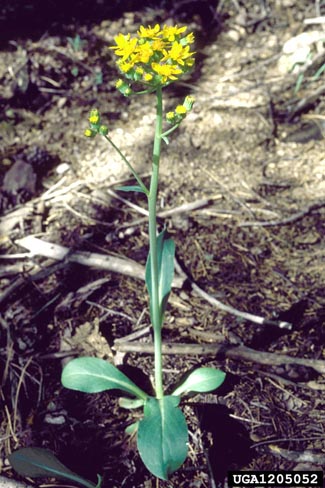Columbia Groundsel

Common Name(s):
Columbia Groundsel
Lambstongue Ragwort
Single-stemmed Groundsel
Wet-the-Bed
Scientific Name:
Senecio integerrimus Nutt.
Scientific Name Synonyms:
Senecio columbianus Greene
Senecio exaltatus Nutt.
Senecio hookeri Torr. & A. Gray
Senecio vaseyi Greenm.
Symbol:
SEIN2
Description:
Life Span: Perennial or Biennial
Origin: Native
Growth Characteristics: Columbia Groundsel is quite slender with a very proper upright posture, growing up to two feet tall.
Flowers: Up to 20 bright yellow flowers per stem with bracts which are red-to-black tipped. Each flower is about ½ inch wide and collectively form a flat topped umbrella-like arrangement. The individual blooms have a ragged appearance.
Fruits/Seeds: Each head produced about 20 smooth seeds with long white bristles to carry them away in the wind.
Leaves: Most leaves of Columbia groundsel are basal and nearly vertical, growing up to 6 inches long and ½ inch wide. The stem leaves are few, clasping, and reduced in size, the uppermost stem leaves only being ½ inch long. All leaves are mostly entire, but a few sometimes have small, irregularly spaced teeth, especially at maturity. Young leaves are covered with cotton-like hairs.
Stems: Columbia groundsel is single stemmed and hollow. The young stems are covered with cotton-like hairs.
Roots: Columbia groundsel arises from a caudex, and has numerous fleshy-fibrous roots.
Ecological Adaptions:
Columbia groundsel is very common in montane and subalpine wetlands, but can also prosper in dry Oak and Spruce forest and sagebrush.
Soils: Prefers moist soils.
Associated Species: Engelmann spruce, Subalpine Fir, Aspen, Gambel Oak, Big Sagebrush.
Uses and Management:
Grazing seems to have little effect on the abundance of Columbia Groundsel, and it does supply some forage. It is most often grazed by sheep early in the season and by cattle later in the fall

